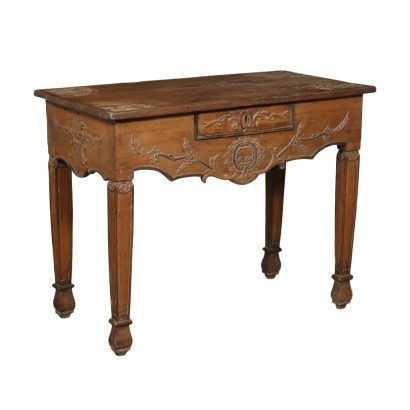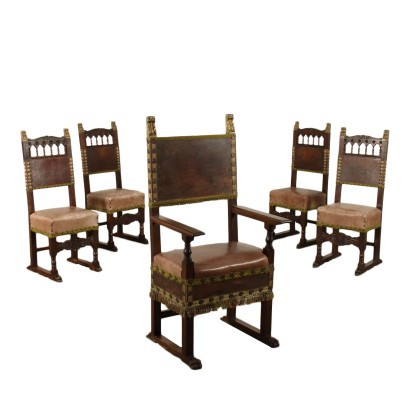Eastern Europe Neoclassical Desk
Features
Style: Neo-Classical (1765-1790)
Age: 19th Century / 1801 - 1900 , 18th Century / 1701 - 1800
Origin: Eastern Europe
Main essence: Chestnut , Walnut
Description
Eastern European neoclassical writing desk, supported by truncated pyramidal feet, the apron is shaped and carved with phytomorphic and floral motifs; there is a drawer in the undertop band. The top also has ornamental motifs carved in the corners. In walnut and chestnut, it has undergone restorations and modifications.
Product Condition:
Product in fair condition showing some signs of wear.
Dimensions (cm):
Height: 79
Width: 102
Depth: 53
Additional Information
Style: Neo-Classical (1765-1790)
This historical period includes a first phase that can be properly defined as the Louis XVI style.nOnly at a later time, with the maturation of archaeological fashions, was a new vision of furnishing civilization formulated and codified, now fully attributable to the Neoclassical Style.
In fact, both trends coexisted in unison until the last years of the eighteenth century.
nIn the field of cabinet making, the Directoire, Retour d'Egypte, Consular and Empire styles also fall within the neoclassical era.
nFind out more about Neoclassicism with the insights from our blog...
n

























